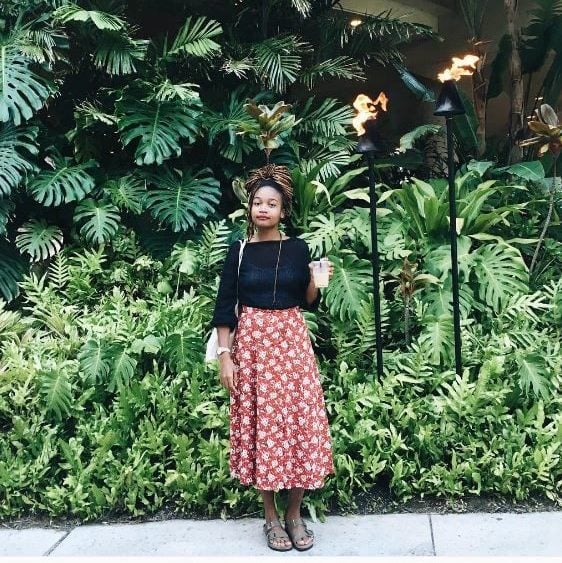Art World
Where Social Media Sensation Kimberly Drew Sees the Art World in 10 Years
The Metropolitan Museum of Art's rising star weighs in.

The Metropolitan Museum of Art's rising star weighs in.

Rain Embuscado

Digital Pioneers is a series of interviews that explores the impact of social media on the future of the art world.
Equal parts organizer, curator, and digital media sensation, Kimberly Drew, otherwise known to her Internet fans as @museummammy, dubs herself a “#carefulblackgirl selling the shadow and supporting the substance.” The Instagram bio reads like a reminder—and in the case of an agent whose project involves “presenting multitudes,” the distinction matters.
Drew stands as one of black contemporary art’s most visible champions. With north of 100,000 followers subscribed to her Instagram handle alone–joined by thousands more across Twitter and Facebook—Drew’s presence is fortified by the type of institutional sheen that comes with running the Metropolitan Museum of Art’s social media channels.
Her rise in the art world started in 2011, on the heels of a summer-long internship with the Studio Museum’s Thelma Golden the year prior. That March, Drew launched a visual repository “for art by and about people of African descent” called Black Contemporary Art.
In July, Drew joined art historian Jessica Bell Brown, and writers Jessica Lynne and Taylor Renee Aldridge, in organizing the Black Art Incubator, a project that invited members of the public in a two-month long program of book exchanges, art critiques, panel discussions, and worshops in SoHo’s Recess exhibition space. The Village Voice described the venture as akin to a “secret clubhouse, convivial with an insider edge.”
We recently caught up with Drew to talk about what she’s been up to, her work at the Metropolitan Museum, and where she sees the art world going in 10 years’ time. See what she had to say below.
What are you up to these days?
A lot of things: Monday to Friday, I work at the Met as the museum’s social media manager. When I’m not at the museum, I work on a blog called Black Contemporary Art and I’m currently working on a book project with Jenna Wortham.
In your interview with the New Yorker, you said the Met “is learning and has a lot to learn.” Where do you see opportunities for improvement, and with respect to your position, how can digital media facilitate these changes?
Since its founding in 1870, the Met’s mission has been centered on “developing and encouraging the study of fine arts.” In my role as the museum’s social media manager, I use digital media to illustrate the museum’s collection, inspire creativity, and present the possibility of a museum experience for communities around the world. I believe that one of my greatest responsibilities is learning what our ever-evolving community needs. Museums are nothing without their audiences. On social [media], I strive to share things that I hope are insightful and relevant to the lives of our followers.
What are other art institutions you admire, and what are they doing right?
I’ve heard a lot of great things about the Brooklyn Museum’s Ask app. The brainchild of Shelley Bernstein, the app was designed to create an interactive, in-gallery experience for curious visitors to the museum. It’s wonderful to see that museums are becoming more dialogical with the communities that they are accountable to. I also deeply admire the Philadelphia ICA and Skowhegan’s New York City location for having all-gender bathrooms.
You’ve been quite a force as an independent agent between projects like Black Contemporary Art and the Black Art Incubator. What’s next?
Honestly, I don’t know. I’m at an exciting point in my career where I feel like a lot of things are possible. I’m enjoying the flexibility of taking it day-by-day.
I don’t have a five-year plan and don’t plan to build one. Last Monday, I was on the South Lawn of the White House and next week I’ll be lecturing in the middle of Madison Square Park. Right now, I’m thinking critically about the role of a curator as a caretaker. My current goal is to take better care of myself and my peers.
Describe the art world you’d like to see in 10 years’ time.
In 10 years, in 10 decades, and beyond, I hope that art organizations of all sizes can afford to take chances on artists, programs, and initiatives that make the world more equitable and beautiful.